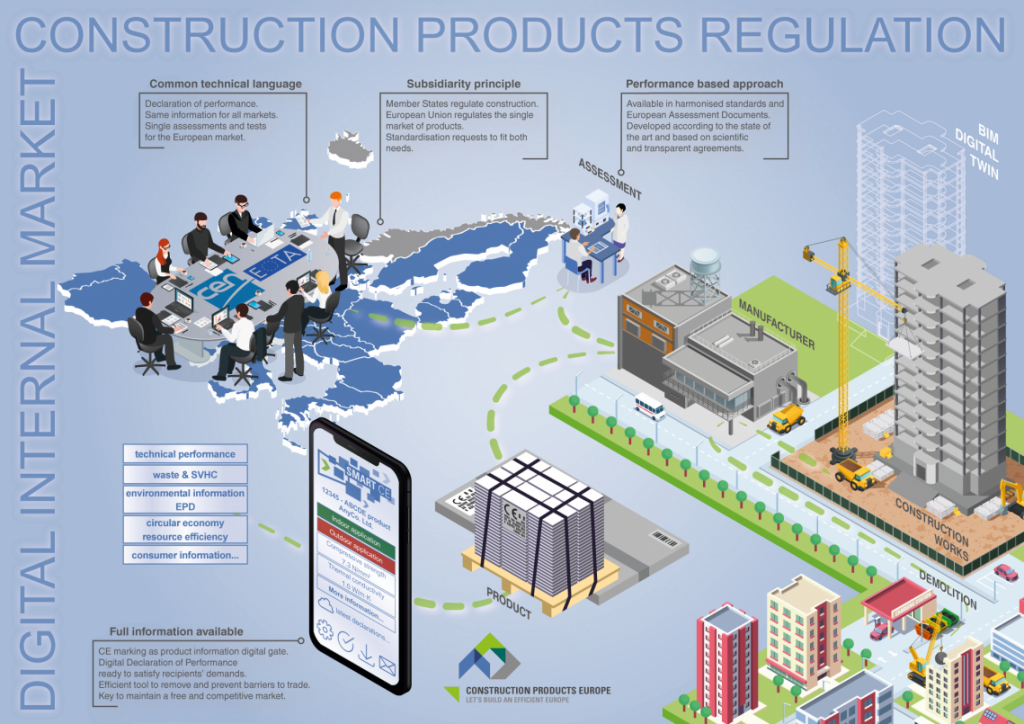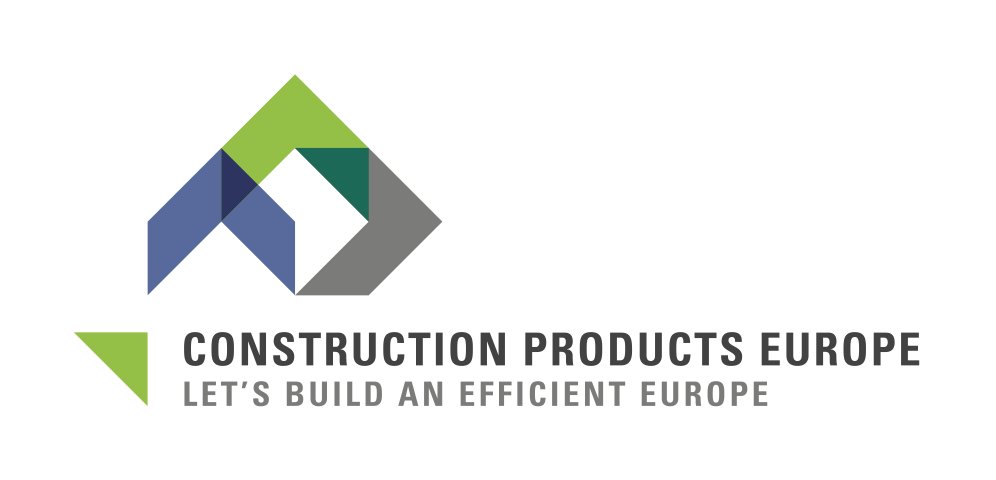Published 15 May 2020
Download the document in PDF

Common technical language
The core deliverable of the CPR is the common technical language. It is defined in harmonised technical specifications, particularly in harmonised product standards, developed in accordance to mandates or standardisation requests. This common language forms the basis for the communication of technical and regulatory information, it simplifies the assessment and declaration of performance of construction products.
Our common technical language regularly needs to be updated to technical improvements, national requirements as well as European legislative initiatives. Examples of such initiatives are the implementation of Basic Requirement of Construction Works 7 to answer to EU Green Deal and Circular economy objectives.
Declaration of performance (DoP) and CE marking
The DoP is the key instrument to deliver product information. It is a unique document, valid at European level to meet the information needs of the market as well as national and European legal framework. Its main objective is providing reliable, objective product information, using a single determination and assessment method, to remove and prevent barriers to trade.
CE marking should be the link between the product and its declaration of performance, allowing effective traceability, compliance and facilitating information access. This concept will be complete once the DoP information is provided in a harmonised digital format.
Harmonised technical specifications
Harmonised technical specifications are required to enforce regulatory requirements to products. These constitute the common technical language and contain the relevant information to properly implement and assess factory production control.
The CEN/CENELEC standardisation process is transparent, inclusive and consensus based. Therefore, harmonised standards (hEN) should by default be developed by CEN/CENELEC. Harmonised standards must reflect the regulatory framework while being useful market tools.
National regulatory requirements
National regulatory requirements must follow the common technical language without any conflict or overlap and should be available by the national product contact points in a publicly accessible database by product and intended use. These must to be updated to keep abreast of the latest harmonised technical specification.
Member States and the European Commission should ensure that the procedures to address national requirements in harmonised technical specifications work properly, respect the subsidiarity and proportionality principles. These processes need to be transparent, efficient and consider market demands.
Third party assessment
Third party assessment by Notified Bodies, when required, is an added value offered by the Construction Products Regulation. It is aligned to the product families and intended uses under a unified European approach guaranteeing an open market. Notification and surveillance of notified bodies needs to be coordinated and enhanced to ensure a fair competition between Notified Bodies while ensuring a high quality of assessments, to maintain and foster trust in the harmonised system.
Simplified procedures
Sharing, cascading and declaring without testing or without further testing are useful instruments for manufacturers. These options deliver reliable information while following the least onerous approach. Any simplified procedure needs to be based on clear definitions and provide the same reliability, irrespective of the size of the manufacturing company.
Products not covered by harmonised standards (hEN)
Manufacturers must have the opportunity to benefit from CE marking and thus from the common market, even if their products are not covered by hEN. These products must be dealt with in a clear and transparent manner, ensuring the application of identical principles and avoiding any overlap.
Market surveillance
Market surveillance needs to follow the same approach and rules in all Member States and should focus on assessing product performances, not only its documentation. Digitalisation has the potential to facilitate the work of market surveillance authorities, allowing them to automatise formal compliance verifications thereby allocating the resources to more important tasks.

